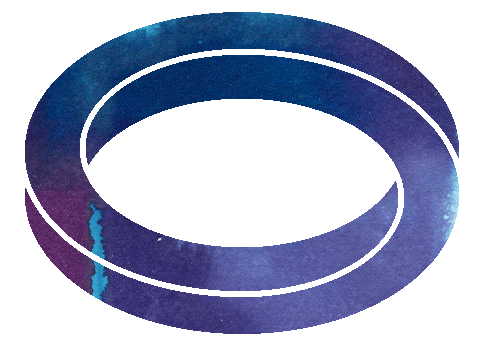“That was so relaxing,” or “That felt good, but I can’t put into words what happened. It was just very quiet.” Are your biodynamic clients prone to vagueness?
Awareness of what has shifted helps my clients appreciate and maintain the changes they have achieved in the session. In this post I explore two ways that I help them register the impact of a session: body reading and conversation.
1. BODY READING
I started out as a practitioner of structural integration, a modality in which body readings are routinely conducted before and after a session. Now I’ve integrated body reading into the biodynamic domain. After the table work, I guide the client’s awareness to their embodied experience, either through open-ended questions or by pointing out specific changes that help the client transcend generic observations like “I feel so relaxed.”
For a body reading, the client can still be lying on the table; standing up afterward; or seated. It gives both of us (client and practitioner) an opportunity to feel and see the impact of the work at either a subtle or structural level. Both levels are affected by biodynamic work.
I will occasionally take a photo to offer the client a visual image that conveys the changes in their body. Sometimes, they can see what they can’t feel. Other times it’s compelling or simply fun for the client to see the work translated into the physical dimension.
This photo (which I’m grateful for permission to share) visually captured the effects of an integrative session conducted via Biodynamics and tuning fork. The contacts were concentrated at the neck, jaw, and head. Check out the lengthening of the right neck, arm, and leg — ordinarily the more contracted side:

Although I’m using the term body reading, it is misleading in the Biodynamic context. Sensitively observing the changes in a client’s body is an important perceptual skill; but this is not about the practitioner informing the client about their own body. Instead, a body reading is an opportunity for both practitioner and client to slow down the process of leaping up and departing. It’s a time for both of us to spontaneously investigate how the session is unfolding. Occasionally I myself am unaware of a session’s effect until my client stands up. Sometimes it catches the client by surprise as well.
Clients are often delighted for the chance to pay attention to their body and debrief with me. It’s so helpful for them to have time, not just to feel the effects of a session but to consciously integrate them. Without that buffer, they tend to reenter daily life and return to habitual embodiment patterns. I encourage them to rehearse the changes they want to maintain, much like an actor rehearsing a new role.

2. CONVERSATION
A body reading is essentially a sensitive conversation that may have pauses for the client to feel and observe what’s true. In my experience, no matter how wonderful a session is, it is the debrief after a session that generates much of its impact and sustainability for the client. Without this conversation and the opportunity to sense into the shifts that took place, a client can remain unaware of how powerful a session it was. And even when a session is undeniably affecting, a conversation can bring awareness to specific changes. Conscious recognition helps the client carry those changes forward.
Sometimes, as James Jealous pointed out, our work is like priming a well; the session’s payoff comes later, after the client has left our office. But even then, a post-session conversation can educate the client about how to take stock of their own body. I ask questions such as:
- What is the texture or substance that your body is composed of now?
- How solid or porous is your body?
- Are you occupying the interior of your head/chest/belly (or suspended outside)?
- Are the mind and body unified or separate?
- How wide is your container or what is your spatial dimension?
- And of course: How do you feel, in relation to any pain, discomfort, or place of interest that you came in with?
Sometimes, words will bring the client out of their embodied experience. In that case, it’s essential not to get too wordy after the session. The practitioner must strike a balance between assuring that the client is grounded enough to safely leave and drive away, and not interrupting the therapeutic process that has been initiated in the session.
On the other hand, I find it valuable to verbally unpack the session with the client. I help them to find words for their own perceptions and experiences. I correlate these words with my own perceptions — and with the corresponding biodynamic phenomena. The essential piece is not me naming their experience; it’s them naming their experience.
A recent client brought this topic to mind. For him, the session was profound even before we spoke about it. But as we spoke about his experience, the effects palpably deepened, at least to my observation. (The client has generously allowed me to write about the session here.)
As we talked and lingered with the feelings, the client spontaneously used very precise and evocative language that seemed not only to reflect the process, but also to interact with his body and heighten the effect.
He used phrases such as: mud puddle, bottom of the pond, exquisite fossil, and silty. Powerful, porous, bright. To correlate his language with Biodynamic work, I used a framework or motto that helps me distill Biodynamic work to its essence: Ground, Expand, and Allow.
- Grounding is when awareness settles into the body; it suggests settling or containing.
- Expanding is when awareness coalesces into wider wholes, which could indicate
- the development of a neutral in the tissue body (i.e. parts unifying into one whole) or
- expansion from the tissue body into the more comprehensive wholes of the fluid body and potency body.
- Allowing is being without doing; it could indicate a disposition of receptivity or openness, on a spectrum from Neutral to the Dynamic Stillness.
Here I offer you a glimpse of how I applied my client’s post-session language within that biodynamic framework.
GROUND. He said mud puddle (the fluid body). He said silty (denser than air but still porous); like I’m under these nice silky sedimentary layers. He said contours of a fossil. Fossil = embodied, having a body in a way that reverts to a more fundamental and ancient level (i.e. the more undifferentiated body or Fluid Tide). Contours = being contained, having a shape.
EXPAND. He said porous (more space). He said illuminated (more light). He said stardust that is connected to origins (radiant primordial elements, i.e. the blueprint level that precedes form, which is Long Tide).
ALLOW. He said stillness. (This was actually the Dynamic Stillness).
It’s a rare client who is so poetic, but this is the gist of all my work. The states described are states of consciousness. Having a conversation helps the client recognize and stabilize in the new state of consciousness or the physical change. And it allows me to witness and affirm that beneficial shift.
I’d love to hear your examples of how you use language or images to help affirm or solidify the effects of a session. Please share your thoughts below.
2 Comments
Leave a Reply Cancel Reply

BE THE FIRST TO HEAR
ABOUT UPCOMING EVENTS
AND PUBLICATIONS.
Unsubscribing is always available with a single click.
This is So relevant and helpful…basically the class around communication in BDC that I have been asking and longing for! I value and benefit so much from your modeling and examples of how you engage your peeps on the work.
When I think about it, I know I harbor a deep-seated aversion to the type of verbal intervention that I was taught when I took my SI (Structural Integration) class 30+ years ago. His (and the massage school I went to and taught at for years) frame was through the Gestalt and Hakomi work. Both VERY heavy in prompting/digging in order to get the client to “pop.” At least to me this is what it felt like. I wondered who was it really for? The Therapist or the client? Seemed to me too often it was so the therapist could feel they had really done something, and had been the agent of change for the client. I remember once our SI teacher wanted each of us to do some work on him so he could ascertain if we were really “getting in there.” I don’t mean to suggest that he or other SI practioners of this model did not do good work, or help people. I think he was trying to update Ida Rolf”s work to include the body mind, knowing of course as we now do the inextricable interconnectedness of the two.
But then I found another modality, OB (Ortho-Bionomy®), and what a relief! To honor this interconnectedness yet allowing a session’s work to unfold and integrate at a pace governed by the innate intelligence in the client’s own body/mind/spirit. A pace that allowed their own body’s innate self-corrective reflexes to integrate the changes that occurred during a session, to allow those changes to be able, effortlessly, to be put into functional use. My sense too often with the SI model I was taught, was that a client’s release/shifts were more valid and effective if done in the presence of the therapist! Gratefully OB (and even more the Biodynamic work), is all about supporting the person’s OWN innate self-corrective capacities…and we trust their “follow-on” to unfold at the exact right timing for THEM. One thing my main OB teacher, Luann, said years ago and that I live by: “An organism can only integrate a certain amount of change at once, otherwise they will just revert back to the familiar patterns. We are sensitive to the subtle changes and tone, and follow a “less is more” ethic, knowing 100% that this innate intelligence IS the primary mechanism for change and health. Now, Biodynamics goes even further with this principle and is the supreme master of it, precisely because the therapist is not “doing” the work.”
This blog post really resonates and helped me see where I have become lazy and rote with my verbal skills with my clients . And hearing this is perfect timing, as more people seem to be randomly finding me that have more complex issues. Thank you SO much.
Thank you so much for these comments, @Mary! I’m so happy that by the sound of it, the post gave you a launching pad to experiment in a new way with language in your own sessions. I especially appreciate how you are weaving in the importance of allowing the client their OWN process: their own timing and their own experience of the work.
There’s an older style of work that you’re referring to where we were taught verbal “interventions” that were pushy, therapeutic, and psychological. What I’m trying to invent and to model is a way of using language that draws out the client’s own experience of the work. Then they can use the words to support the kinesthetic memory of the session, and *that* helps them sustain the changes.
(The quote from Luann is awesome and like you say, dovetails perfectly with Biodynamics. Our clients are better able to sustain the changes that arise in a biodynamic session, because those changes are in synch with the priorities of the innate intelligence.)
There’s another way I work with words that I did not explore in this particular blog, and I’m inspired by your comment to try writing about it in a future piece! Stay tuned 🙂 And please keep us posted about your own use of language in a biodynamic context?